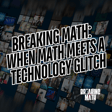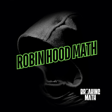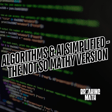
94. Interview with Steve Nadis, Co-author of 'Gravity of Math'
Summary
**Tensor Poster - If you are interested in the Breaking Math Tensor Poster on the mathematics of General Relativity, email us at BreakingMathPodcast@gmail.com
In this episode, Gabriel Hesch and Autumn Phaneuf interview Steve Nadis, the author of the book 'The Gravity of Math.' They discuss the mathematics of gravity, including the work of Isaac Newton and Albert Einstein, gravitational waves, black holes, and recent developments in the field. Nadis shares his collaboration with Shing-Tung Yau and their journey in writing the book. They also talk about their shared experience at Hampshire College and the importance of independent thinking in education. In this conversation, Steve Nadis discusses the mathematical foundations of general relativity and the contributions of mathematicians to the theory. He explains how Einstein was introduced to the concept of gravity by Bernhard Riemann and learned about tensor calculus from Gregorio Ricci and Tullio Levi-Civita. Nadis also explores Einstein's discovery of the equivalence principle and his realization that a theory of gravity would require accelerated motion. He describes the development of the equations of general relativity and their significance in understanding the curvature of spacetime. Nadis highlights the ongoing research in general relativity, including the detection of gravitational waves and the exploration of higher dimensions and black holes. He also discusses the contributions of mathematician Emmy Noether to the conservation laws in physics. Finally, Nadis explains Einstein's cosmological constant and its connection to dark energy.
Chapters
00:00 Introduction and Book Overview
08:09 Collaboration and Writing Process
25:48 Interest in Black Holes and Recent Developments
35:30 The Mathematical Foundations of General Relativity
44:55 The Curvature of Spacetime and the Equations of General Relativity
56:06 Recent Discoveries in General Relativity
01:06:46 Emmy Noether's Contributions to Conservation Laws
01:13:48 Einstein's Cosmological Constant and Dark Energy
Subscribe to Breaking Math wherever you get your podcasts.
Become a patron of Breaking Math for as little as a buck a month
Follow Breaking Math on Twitter, Instagram, LinkedIn, Website
Follow Autumn on Twitter and Instagram
Folllow Gabe on Twitter.
email: breakingmathpodcast@gmail.com



















